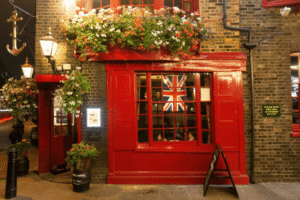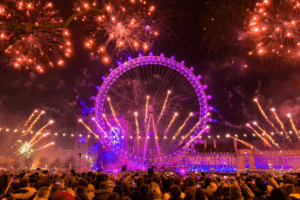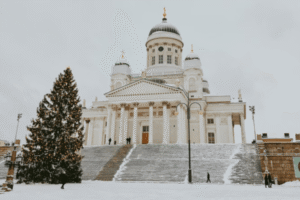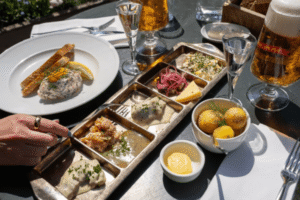Some sights make you stop in your tracks. The Northern Lights? They make you forget where you are entirely. Imagine standing under a vast Arctic sky as ribbons of green, purple, and red dance above you, shifting, swirling, shimmering like something from another world. It’s surreal. It’s hypnotic. And if you’ve never seen it in person, you’re missing out on one of nature’s most jaw-dropping displays.
But here’s the thing, seeing the Northern Lights isn’t just about luck. Sure, solar activity plays a role. But if you want to maximize your chances, you need a strategy. When to go, where to go, what to expect, and how to capture it, all of it matters.
This isn’t just another “best places to see the Northern Lights” list. This guide is packed with actionable insights, the best locations, peak viewing times, expert tips, and even how Google’s latest search updates impact content on the aurora. Because let’s be honest, if you’re planning a trip to see the lights, you want real advice, not recycled fluff.
Key Takeaways
- The Northern Lights (Aurora Borealis) are caused by charged solar particles hitting Earth’s atmosphere, creating colorful light displays mostly from September to March.
- Best viewing times are between 10 PM and 2 AM under clear, dark skies with minimal light pollution.
- Top Scandinavian spots include Abisko (Sweden), Tromsø and Kirkenes (Norway), Rovaniemi and Enontekiö (Finland), plus the Faroe Islands.
- Dress warmly in layers, use aurora forecast apps, and bring a tripod for photography.
- The Northern Lights are unpredictable, so plan well and be patient, the experience is unforgettable.
Understanding the Northern Lights
The Northern lights or Aurora Borealis occurs when charged particles from the sun interact with Earth’s magnetic field, causing ionization and subsequent light emissions. These interactions produce shimmering curtains of light that vary in color from green to pink, red, yellow, blue, and violet. The intensity and frequency of these displays are influenced by solar activity, with the peak viewing season typically spanning from September to April.
Optimal Conditions for Viewing
To maximize the chances of witnessing the Northern Lights, consider the following:
- Location: Seek areas with minimal light pollution, away from city lights.
- Weather: Clear, cloudless skies are essential for optimal visibility.
- Solar Activity: Stay informed about solar forecasts, as heightened solar activity increases the likelihood of auroral displays.
The Science Behind the Northern Lights
The Northern Lights, or Aurora Borealis, are more than just a dazzling light show, they are a cosmic phenomenon fueled by solar activity. The spectacle begins with solar wind, a stream of charged particles ejected from the sun. When these particles collide with Earth’s magnetosphere, they are directed toward the polar regions, where they interact with gases in the atmosphere.
Each color in the aurora corresponds to a different type of gas and altitude:
• Green – Oxygen at lower altitudes (most common).
• Red – Oxygen at higher altitudes (rare but intense).
• Purple & Blue – Nitrogen collisions at different energy levels.
The stronger the solar wind, the more intense and widespread the aurora. This is why periods of high solar activity, such as during a solar storm or geomagnetic event, produce the most breathtaking displays.
Best Times to Witness the Northern Lights
While the aurora can appear anytime the sky is dark, certain times of the year and night offer better visibility.
Best Months for the Northern Lights
• September to March – Peak aurora season in the Northern Hemisphere.
• March and September Equinoxes – Historically, auroral activity spikes due to geomagnetic conditions.
Best Time of Night
• 10:00 PM – 2:00 AM (local time) – The aurora is strongest around magnetic midnight, when Earth is in the most favorable position for solar wind interactions.
Weather Considerations
• Clear skies are essential. Check cloud forecasts before heading out.
• Avoid full moons, as the bright light can wash out the aurora.
For real-time forecasts, check resources like the NOAA Aurora Forecast or the Geophysical Institute’s Aurora Tracker.
Now let’s introduce the best places where to see the northern lights.
Scandinavia offers several prime locations to experience the Aurora Borealis. Here are some of the best spots:
Abisko National Park, Sweden
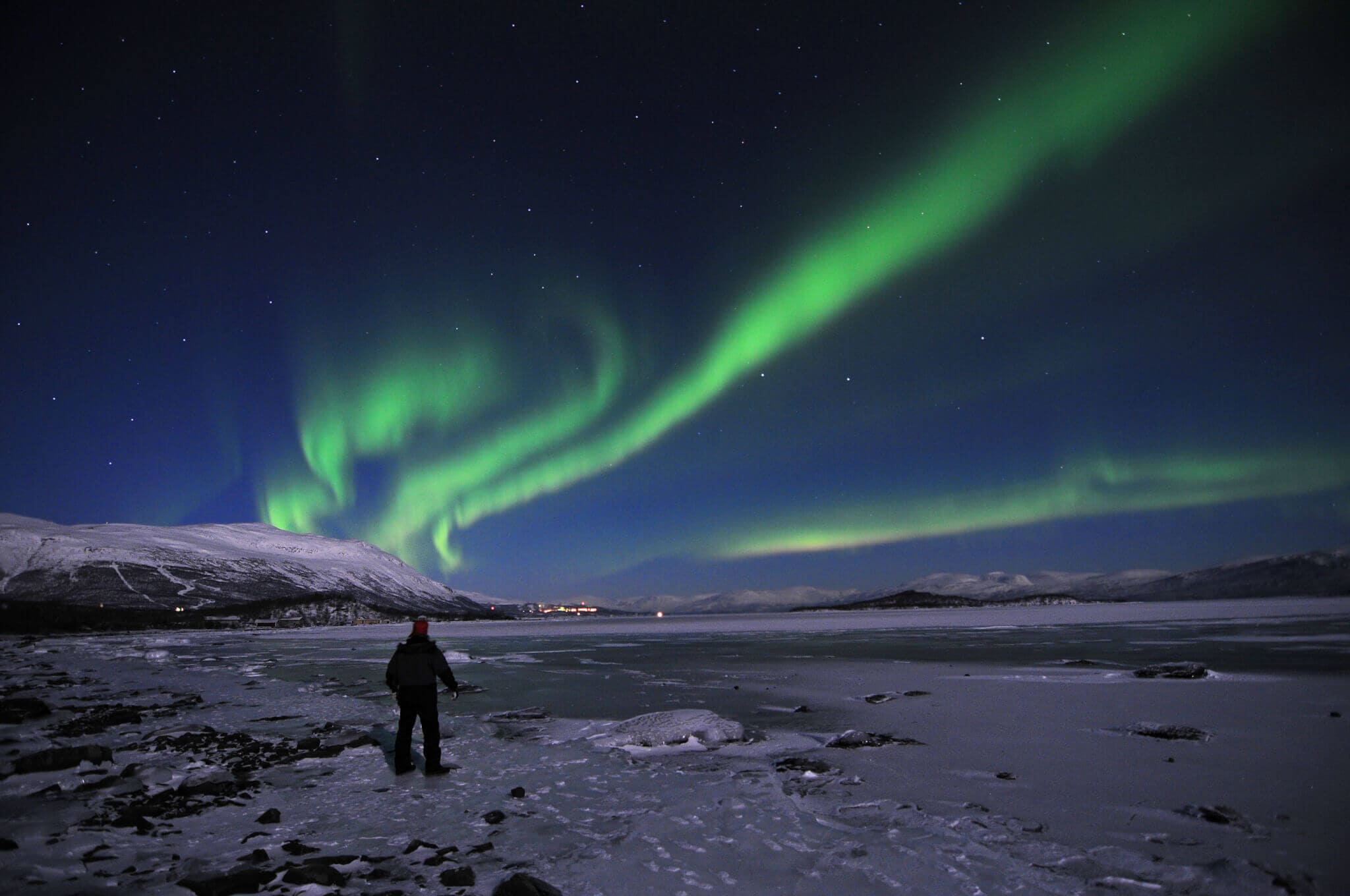
Photo: Abisko Mountain Lodge
Renowned for its clear skies and minimal light pollution, Abisko provides some of the most reliable Northern Lights sightings. The park’s unique microclimate often results in clear nights, even when surrounding areas are cloudy.
Tromsø, Norway
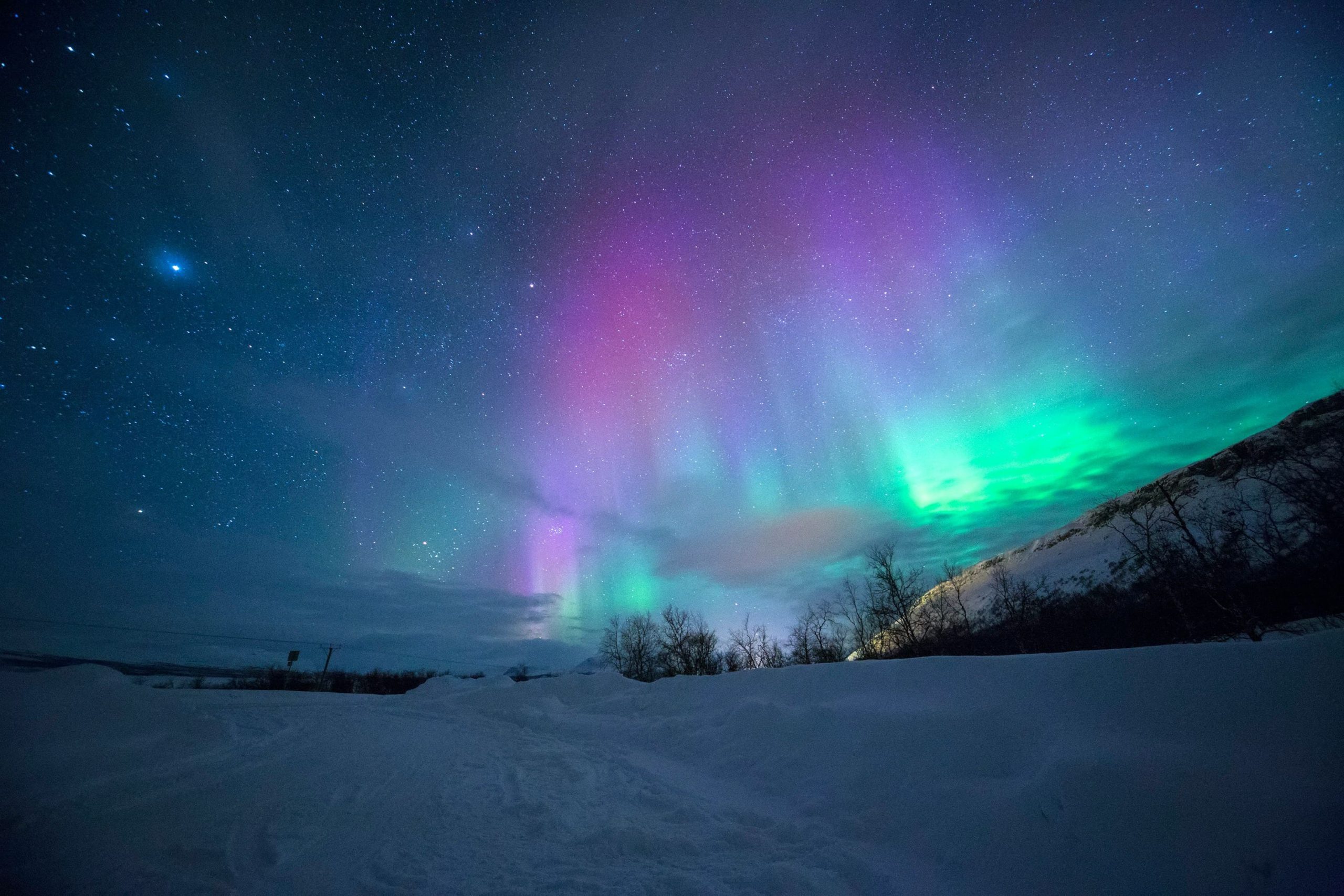
Photo: Lightscape
Located above the Arctic Circle, Tromsø is a vibrant city that offers a blend of cultural experiences and excellent Northern Lights viewing opportunities. The surrounding fjords and mountains provide a stunning backdrop for the auroras.
Rovaniemi, Finland
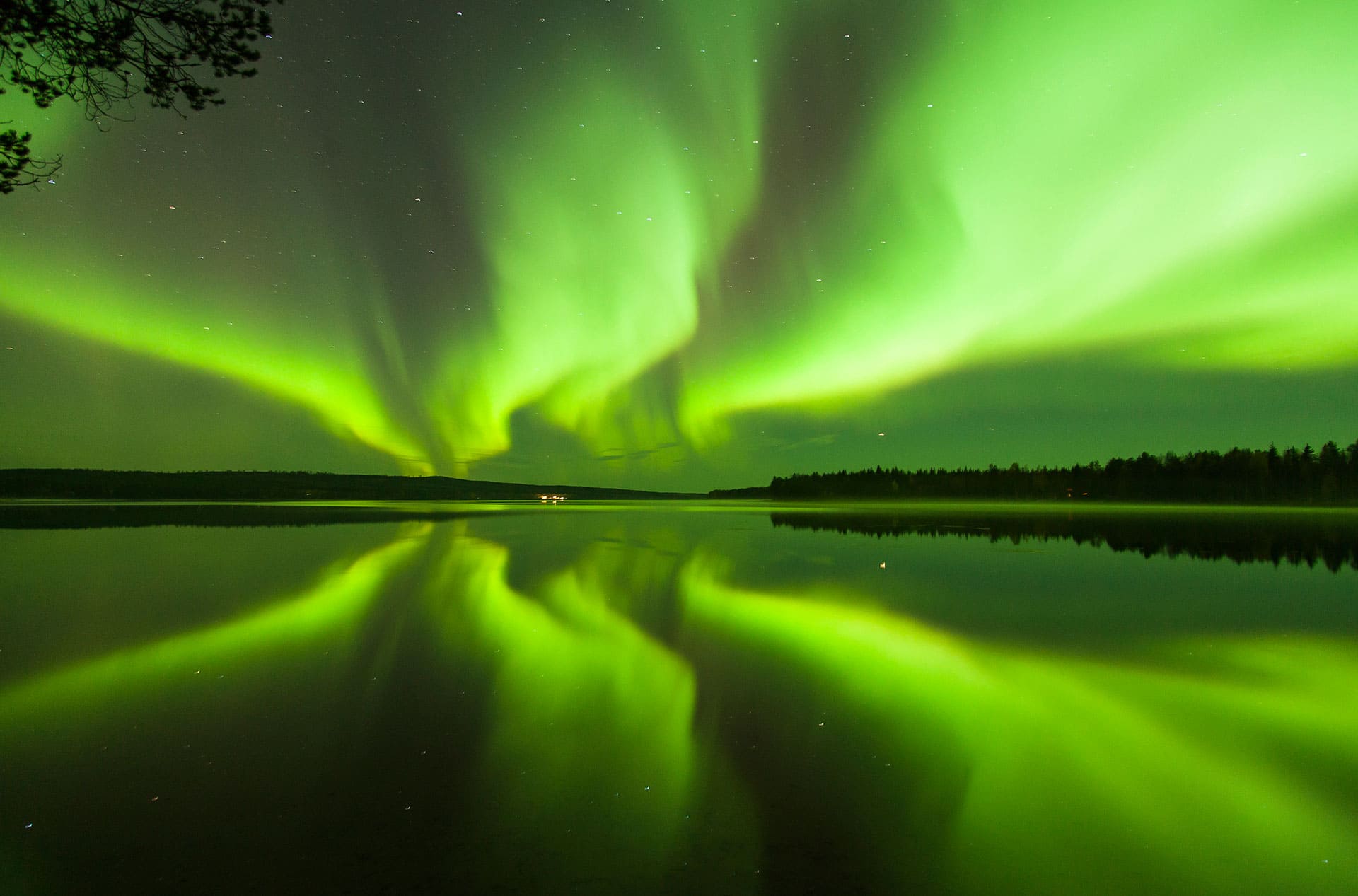
Photo: Visit Rovaniemi
Rovaniemi, located in the heart of Finnish Lapland, is not only the official hometown of Santa Claus but also a prime destination for experiencing the Northern Lights. Situated just beneath the Arctic Circle, Rovaniemi’s remote wilderness areas provide clear, unobstructed views of the auroras, especially during the dark winter months from September to April. The region’s long, crisp nights and minimal light pollution make it an ideal spot to witness the breathtaking natural phenomenon. Beyond the auroras, Rovaniemi offers an enchanting winter wonderland. Visitors can meet Santa Claus at Santa Claus Village, cross the Arctic Circle, and experience a range of Arctic activities, including reindeer sleigh rides, husky safaris, and snowmobiling.
Kirkenes, Norway
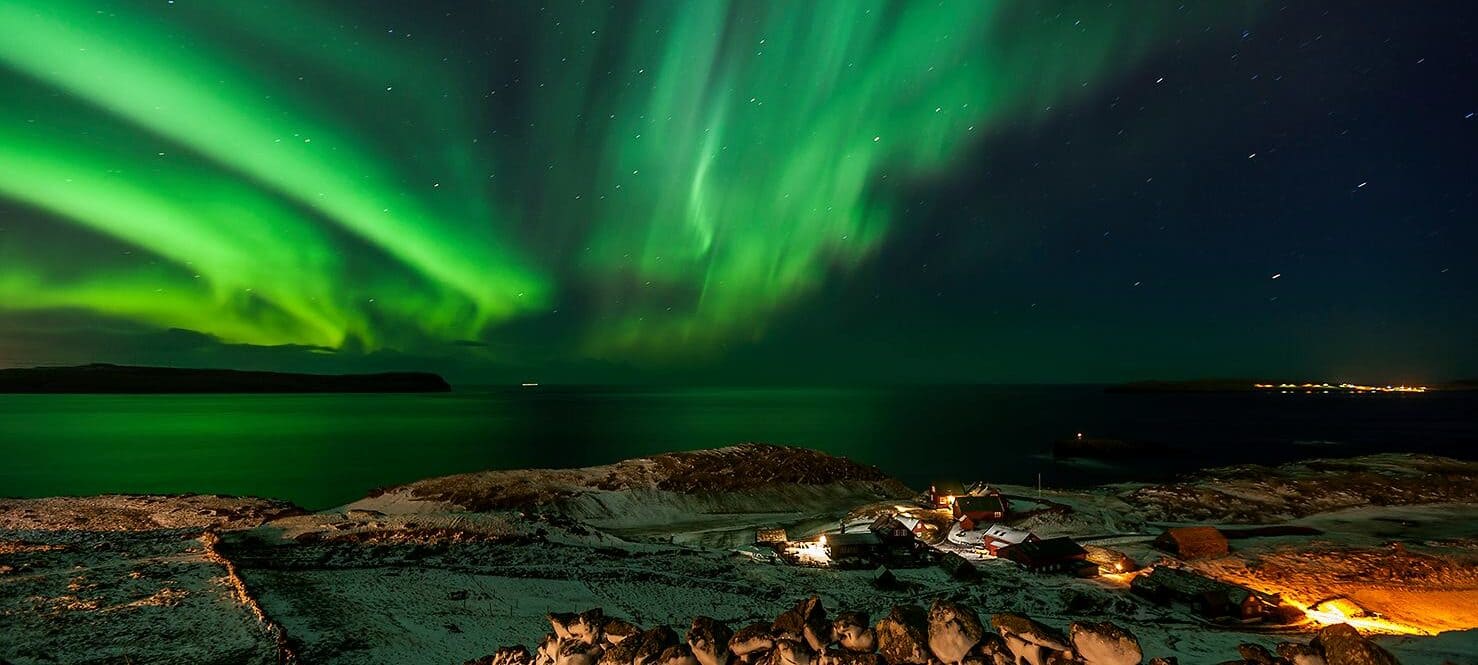
Photo: Norway Lights
Situated near the Russian border, Kirkenes offers extraordinary experiences like snowmobiling and dog sledding, along with unparalleled aurora viewing opportunities. This charming town effortlessly blends Norwegian, Sami, Finnish, and Russian cultures. Embark on an exhilarating snowmobile adventure with a guide for an unforgettable chase through Siberian Taiga forests, where rare birds thrive and Norway’s densest brown bear population roams.
Enontekiö, Finland
Photo: Enontekiö Arctic Lapland
Located in Finnish Lapland, Enontekiö boasts some of the highest rates of Northern Lights occurrences in Finland, with clear skies and minimal light pollution. With clear skies and minimal light pollution, the region boasts one of the highest occurrences of aurora sightings in Finland. The Northern Lights can be observed on three out of four nights during the dark season from September to April.
Faroe Islands
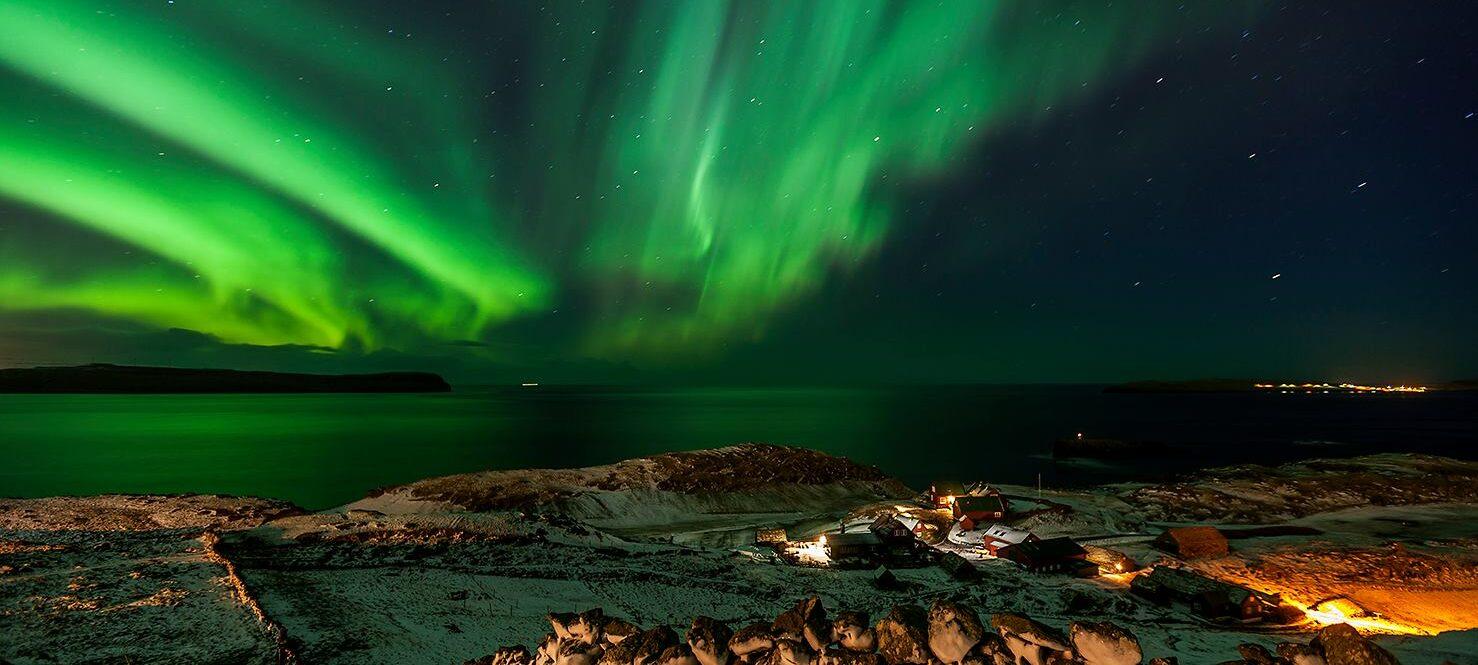
Photo: Guide to Faroe Islands
Situated between Iceland and Scotland, the Faroe Islands offer a unique vantage point for viewing the Northern Lights. The island’s remote location and minimal light pollution make it an ideal destination for aurora enthusiasts. The best time to visit is during the winter months, from November to February when the nights are the longest.
Boost Your Northern Lights Experience
… and take pictures that actually look good! More on that down below.
- Stay Informed: Utilize Aurora forecast apps and websites to monitor solar activity and weather conditions.
- Dress Appropriately: Given the cold temperatures in these regions, especially during winter months, wear layered clothing, thermal wear, and insulated outerwear.
- Photography Tips: Use a tripod, set your camera to manual mode with a high ISO, and experiment with exposure times to capture the best images of the auroras.
Aurora Forecast and Tools
If you’re planning a trip to see the Northern Lights, checking real-time aurora forecasts is essential. The aurora depends on solar activity, weather, and your geographic location. Even during peak season, you won’t see anything without a combination of high auroral activity and clear skies.
One of the most widely used indicators of auroral activity is the KP index, a scale from 0 to 9 that measures geomagnetic disturbances. A KP of 3–4 typically offers good chances in northern Scandinavia. A KP of 5–6 may allow viewing from parts of the UK and the northern U.S., while a KP of 7 or above suggests auroras could be visible even farther south in central Europe or the Midwest United States.
Equally important is weather. Even the strongest solar storm won’t produce visible auroras if cloud cover blocks your view. To maximize your chances, use a combination of aurora and cloud forecasts.
Here are trusted tools to check before heading out:
- NOAA Aurora Forecast – This real-time map shows where auroras are currently visible or expected to appear in the next 30 to 90 minutes. It includes hemispheric forecasts and helpful explanations.
- University of Alaska Fairbanks Aurora Forecast – One of the most detailed regional forecasts, including maps for Europe, North America, and the KP index breakdown by date and time.
- AuroraWatch UK – A magnetic activity alert service run by Lancaster University, helpful if you are based in or near the UK.
- Mobile apps: Apps like My Aurora Forecast, Aurora Alerts, and Hello Aurora provide location-based KP alerts, cloud coverage, and sky visibility scores. These are particularly useful when you’re traveling in remote areas.
Before heading out, always double-check both solar activity and local sky conditions. Remote areas with minimal light pollution, such as Abisko in Sweden or the Finnish Lapland wilderness, tend to offer the best visibility.
How to Photograph the Northern Lights
Capturing the Northern Lights is a highlight for many travelers, but photographing them requires preparation. Because auroras typically occur in low-light conditions and move rapidly across the sky, you’ll need manual camera settings and the right gear to get high-quality images.
The best camera for photographing auroras is a DSLR or mirrorless model with manual exposure controls. Pair it with a wide-angle lens that has a fast aperture (f/2.8 or wider), and always use a sturdy tripod, any vibration will blur your image during long exposures.
Your camera settings will vary depending on the brightness of the aurora and ambient light, but these general guidelines are a good place to start:
- ISO: 800 to 3200
- Aperture: f/2.8 (or the widest your lens allows)
- Shutter speed: 5 to 20 seconds
Use manual focus, ideally set to infinity. You can pre-focus during the day or use your camera’s live view mode to focus on a distant light or star. Cold temperatures reduce battery life dramatically, so carry spares and keep them warm in your pockets.
If you’re using a smartphone, recent models like the iPhone Pro series and Google Pixel support long-exposure modes that can capture basic aurora activity. For best results, mount your phone on a tripod and use manual camera apps that let you control ISO and shutter speed.
Finally, try to avoid artificial light near your setup. Even brief flashes from headlamps or nearby traffic can create lens flare or ruin long exposures.
Northern Lights Viewing Around the World
While Scandinavia is one of the best regions for viewing the aurora borealis, it’s not the only one. The Northern Lights are visible in several countries across the Arctic Circle and occasionally much farther south during periods of strong solar activity. There’s also a southern counterpart, the Aurora Australis, visible from parts of the Southern Hemisphere.
In Norway, the area around Tromsø is one of the most popular destinations for Northern Lights trips, offering consistent sightings and a wide range of tours and accommodations. With fjords, islands, and a relatively mild coastal climate, Tromsø provides a scenic and accessible base for aurora hunting.
In Sweden, the village of Abisko is renowned for having some of the clearest skies in the Arctic, thanks to its location in a rain shadow. The Abisko National Park area is frequently cited as one of the best places in the world to see the Northern Lights because of its minimal light pollution and consistent weather.
In Finland, the region of Lapland offers remote wilderness and unique accommodations like glass igloos, which allow you to watch the sky from the warmth of your bed. The area around Saariselkä and Rovaniemi combines reliable aurora activity with opportunities to explore Sámi culture and Arctic wildlife.
Outside of Europe, Iceland is also a popular destination, though its weather is more unpredictable. Fairbanks, Alaska, and Whitehorse in Canada’s Yukon Territory offer excellent inland skies and fewer tourists. If you’re visiting the Southern Hemisphere, the Aurora Australis can occasionally be seen from Tasmania and New Zealand’s South Island, although it is less frequent and typically weaker than its northern counterpart.
Conclusion
The Northern Lights are unpredictable. Even if you plan everything perfectly, the right season, the right place, the right conditions. There’s always an element of chance. That’s what makes it exciting.
But luck favors the prepared. If you’ve read this guide, you now know where to go, when to go, how to plan, and what to do if the aurora doesn’t show up on cue. You know the best tools for tracking solar activity, how to dress for Arctic conditions, and even how to capture stunning aurora photos like a pro.
And here’s the truth. If you’ve ever thought about chasing the Northern Lights, don’t wait. The best time isn’t “someday.” It’s this year, this winter, this trip you finally decide to take. Because nothing compares to standing under a sky that explodes into color, realizing you’re witnessing something ancient, something cosmic, something that most people only dream of seeing.
So book that flight. Find that remote cabin. Stay up late, drink something warm, and keep your eyes on the sky. Because when the lights finally appear, trust me, you’ll never forget it.
Book Your Custom Day Trip with Amitylux
Ready to chase the aurora and embark on a unique Arctic adventure? Book your unforgettable journey with Amitylux today and discover the magic of Scandinavia’s mesmerizing skies. Let us handle the details while you create memories that last a lifetime!
FAQ
The optimal locations for viewing the Northern Lights are within the auroral zone, which includes parts of Norway, Sweden, Finland, Iceland, Canada, and Alaska. In Sweden, Abisko National Park is renowned for its clear skies and high probability of sightings. Similarly, Tromsø in Norway and Inari in Finland are popular destinations for aurora enthusiasts.
The Northern Lights are primarily visible in regions near the Arctic Circle, known as the auroral zone. This includes areas in Norway, Sweden, Finland, Iceland, Canada, and Alaska. The Southern Hemisphere counterpart, the Aurora Australis, is visible near the South Pole, but it’s less accessible due to its remote location.
The Northern Lights are caused by the interaction between charged particles from the sun and Earth’s magnetic field. When these particles collide with gases in Earth’s atmosphere, they produce light displays. The specific colors depend on the gas type and the collision’s altitude. For instance, oxygen at higher altitudes can emit red and green lights, while nitrogen can produce purples and blues.
The best months to see the Northern Lights are September to March, with peak visibility between December and February when nights are longest and skies are darkest.

